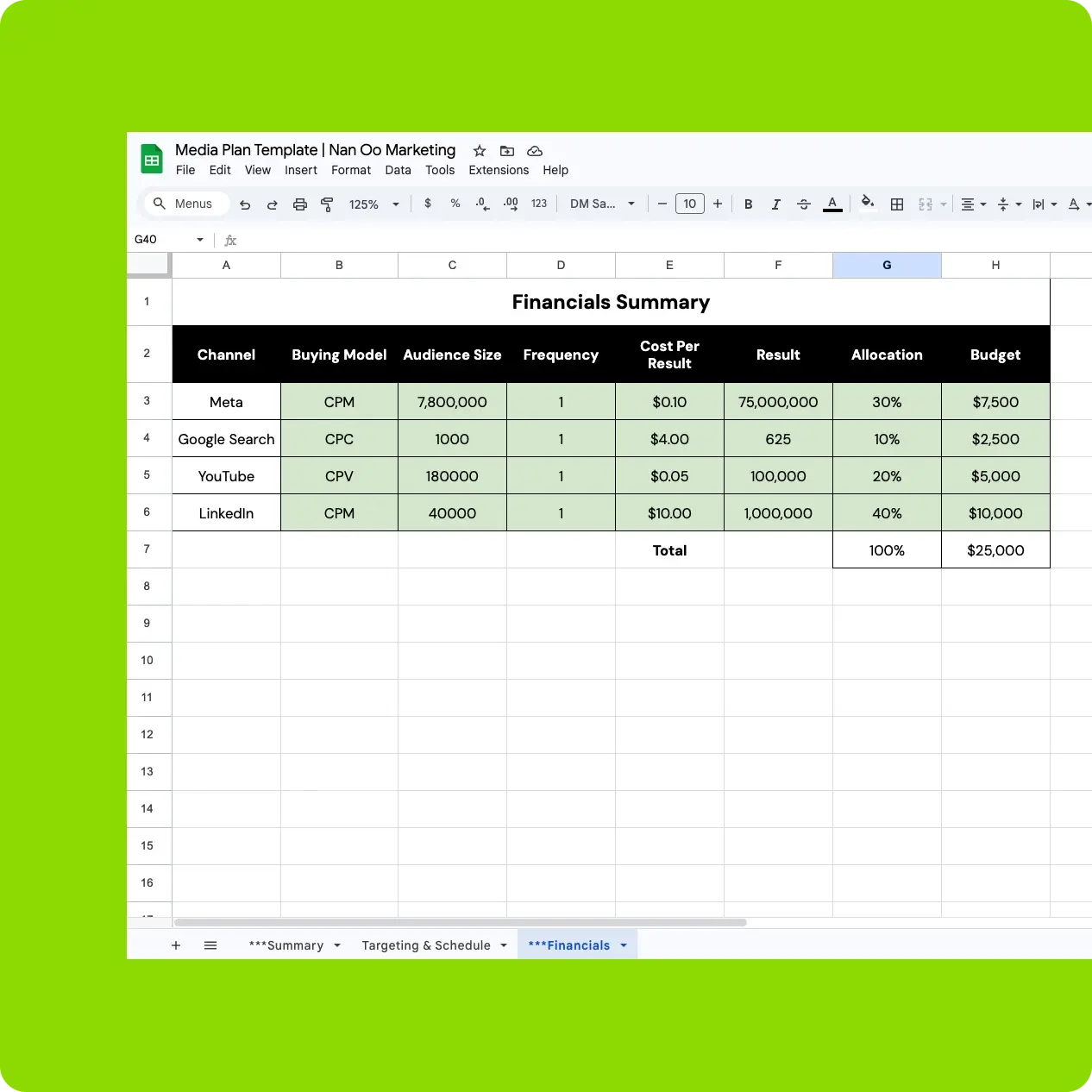Media Buying Plan Template
We've all been there. Juggling platforms, budgets, and performance data can turn media buying into a major headache. That's why we created a FREE downloadable Google Sheet template specifically designed to streamline your media buying process.


Media planning and media buying are two critical components of the digital marketing industry that work together to create effective advertising campaigns. Here are the key differences between the two:
What is Media Planning?
Media planning is the process of outlining advertising campaign activities prior to launch. It involves research, budget forecasting, audience identification, segmentation, and channel and media mix selection. The media planner handles this process and creates the foundation for campaigns, including how much to spend, how long to operate the campaign, and what KPIs to meet.
The media planning process includes:
- Conducting research and analysis
- Defining objectives and KPIs
- Creating a budget and timeline
- Selecting platforms and delivery methods
- Choosing media content
What is Media Buying?
Media buying is the execution of a media plan. This includes procuring ad space by negotiating with suppliers (data providers, ad space vendors, managed services, etc.) to meet campaign budget and expectations.
Media buyers can purchase ad space in a few different ways, such as personally reaching out to ad inventory vendors, brokering deals, or purchasing ad space through platforms like Google Ads or other programmatic platforms.
Key responsibilities of media buyers include:
- Fielding ads on time
- Setting bid maximums
- Tracking metrics for attribution and optimization
- Staying within budget
While media planning and buying require different processes, they are collaborative processes that work together to create effective advertising campaigns. The media planner does the upfront planning, while the media buyer handles the execution and negotiation of ad placements in a digital marketing team.
Key differences between traditional media planning and digital media planning
1. Audience Targeting: Digital media planning allows for much more granular and precise audience targeting compared to traditional media. Digital platforms can leverage user data, browsing behavior, demographics, and other signals to target ads to very specific segments. Traditional media relies more on broader demographic targeting.
2. Measurement and Analytics: Digital media provides much more robust measurement and analytics capabilities. Marketers can track detailed metrics like impressions, clicks, conversions, and ROI in real-time. Traditional media measurement is more limited and delayed.
3. Flexibility and Adaptability: Digital media campaigns can be adjusted, optimized, and pivoted much more quickly based on performance data. Traditional media plans are less flexible once launched.
4. Cost-Effectiveness: Digital advertising is generally more cost-effective than traditional media, especially for smaller budgets. The ability to precisely target and measure digital ads leads to better ROI.
5. Interactivity: Digital media enables interactive ad formats and two-way engagement with consumers. Traditional media is more one-way communication.
6. Reach and Frequency: Traditional media like TV, radio, and print can still provide broader reach and higher frequency than digital alone, especially for local or older demographics.
7. Brand Building: While digital excels at direct response and performance marketing, traditional media may be better suited for building long-term brand awareness and equity.
The most effective media plans often leverage a strategic mix of both traditional and digital channels to capitalize on the unique strengths of each. Digital marketers need to understand these differences to develop integrated, multi-channel campaigns.
Marketers from These Leading Companies Love My Templates
Buy Nan Oo a Coffee ☕
If you find it helpful (which I know you will),
consider buying Nan Oo a coffee to keep the creative juices flowing.
.png?width=100&height=100&name=Nan%20Oo%20(1).png)